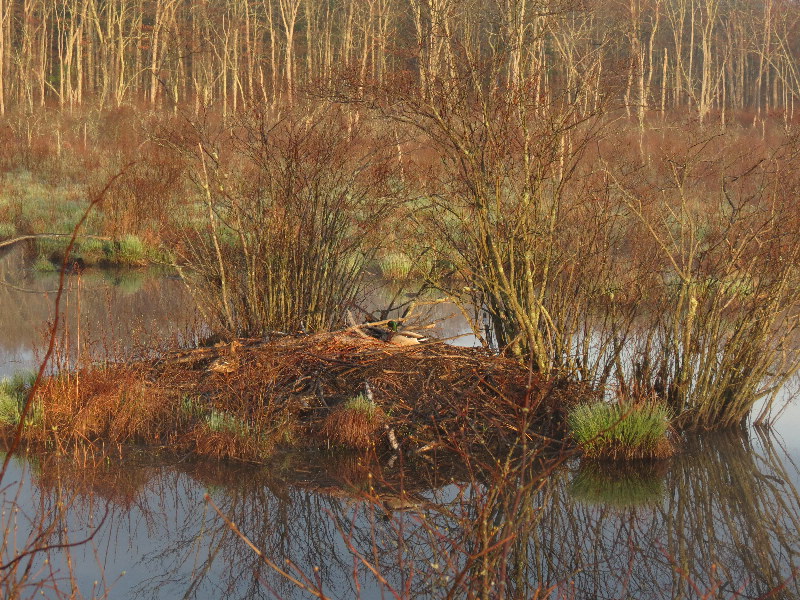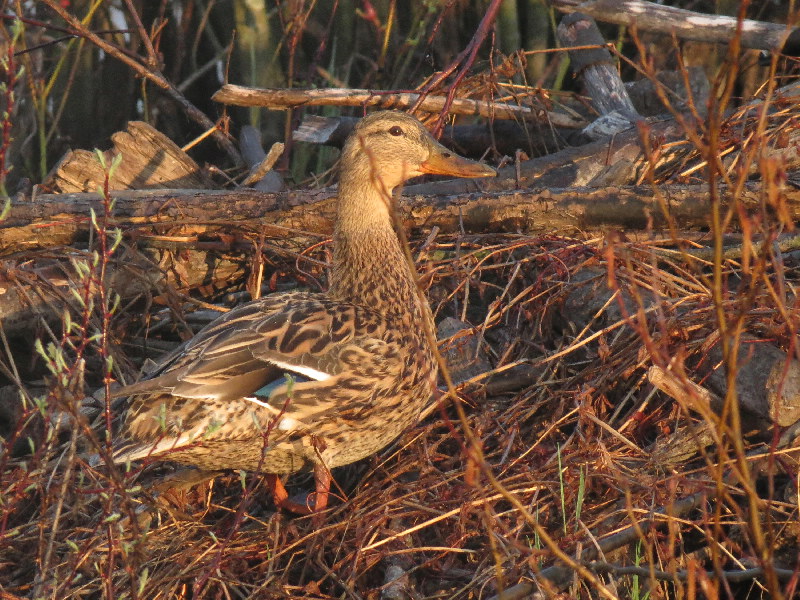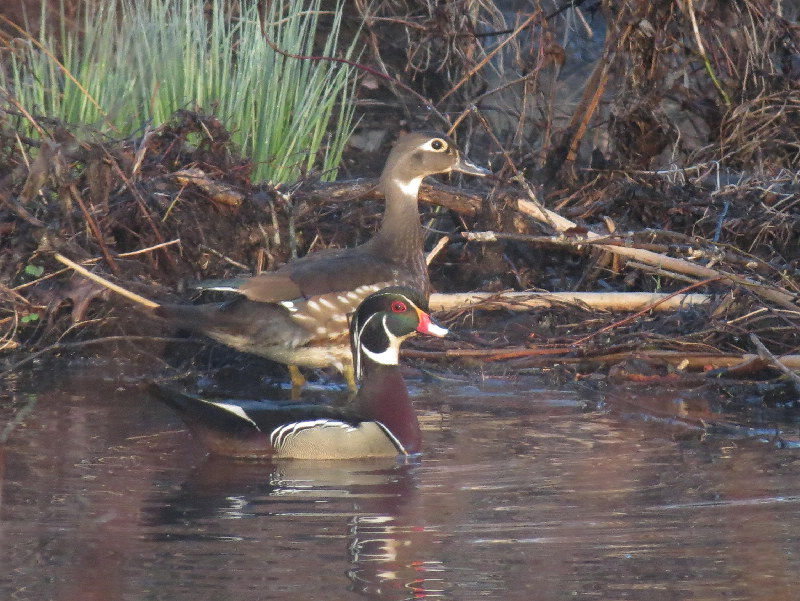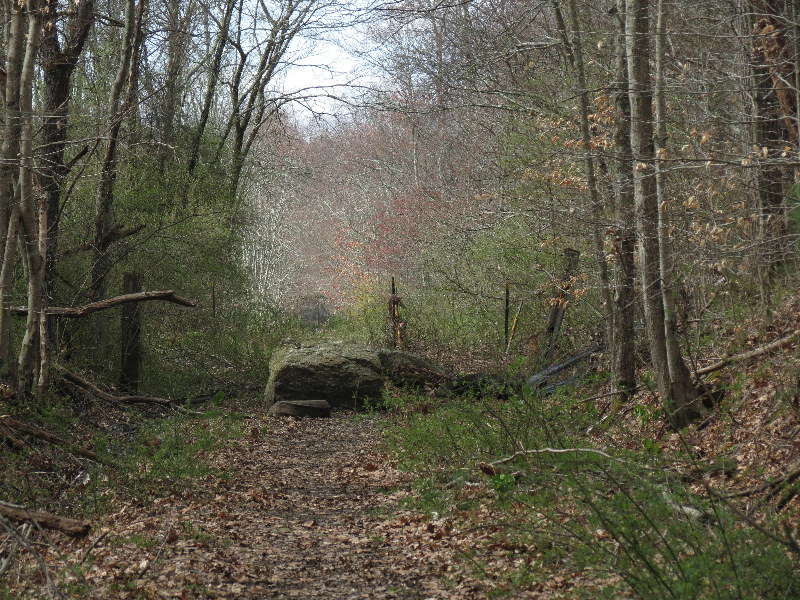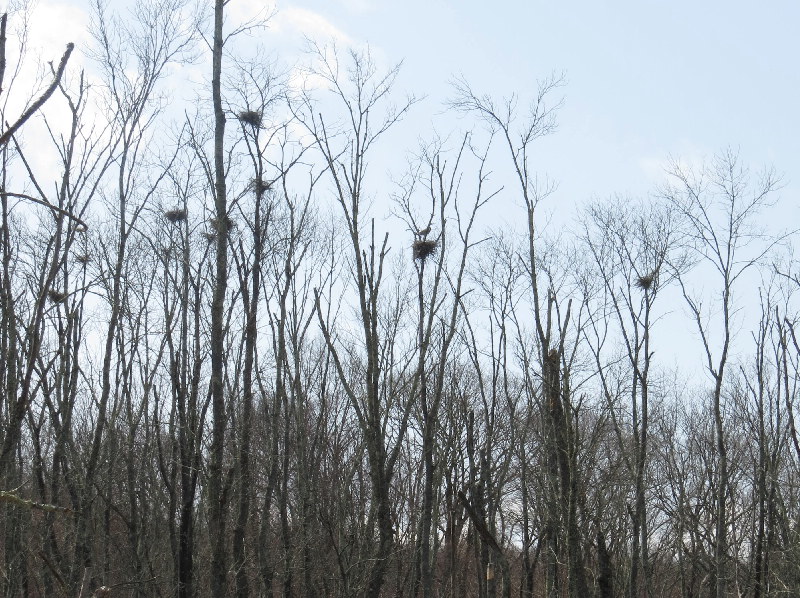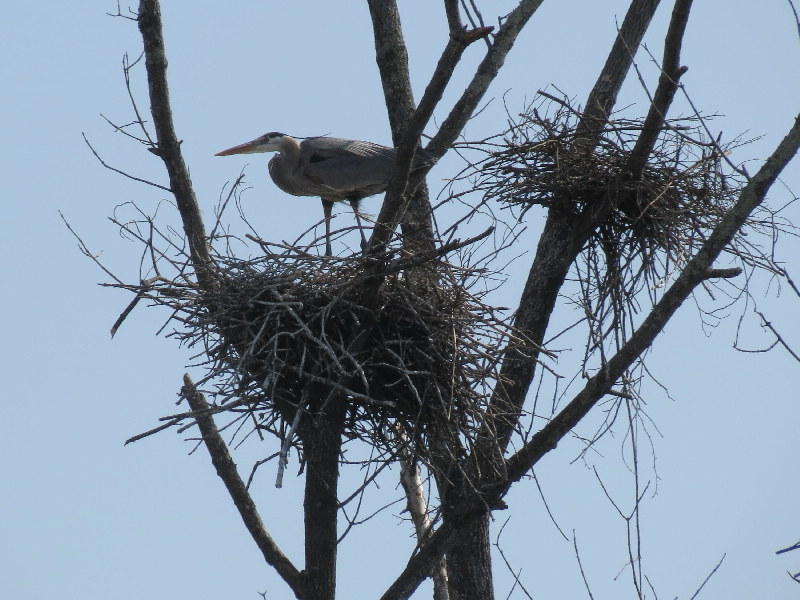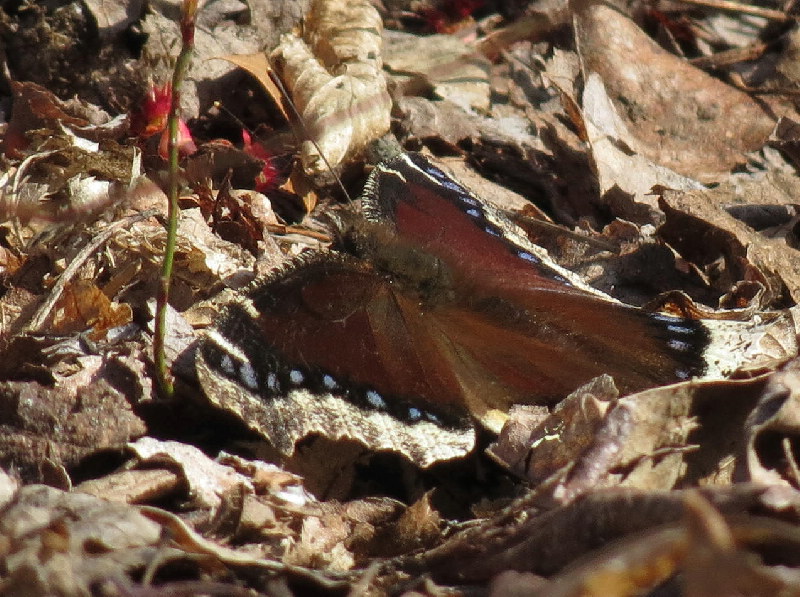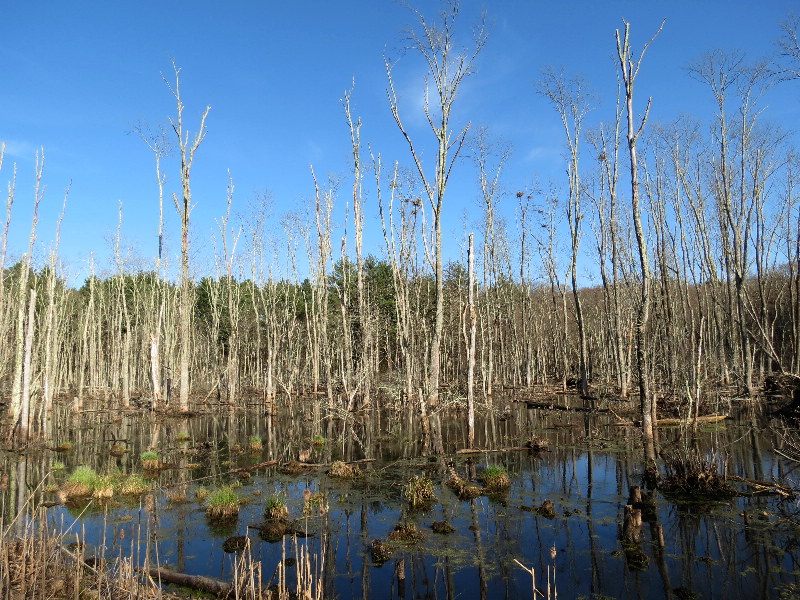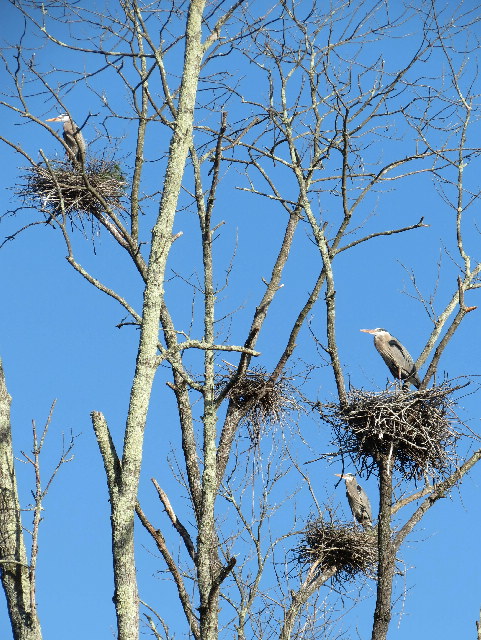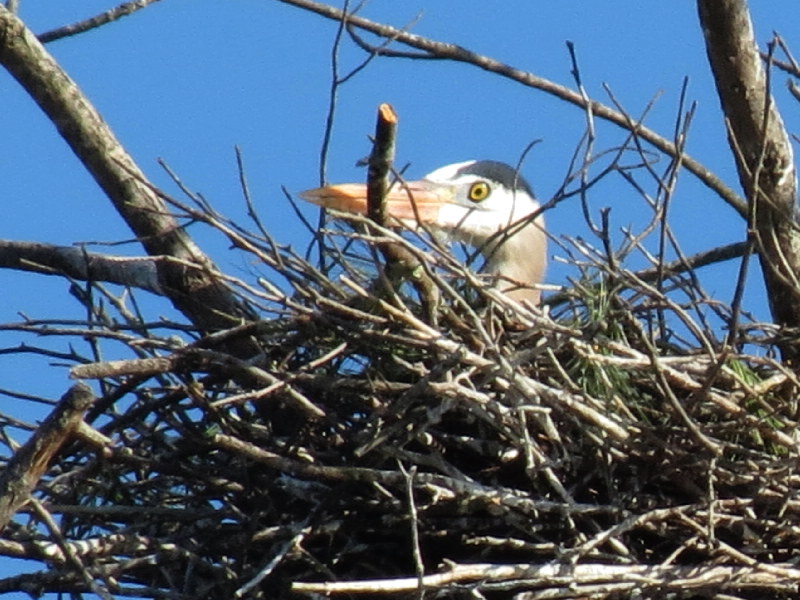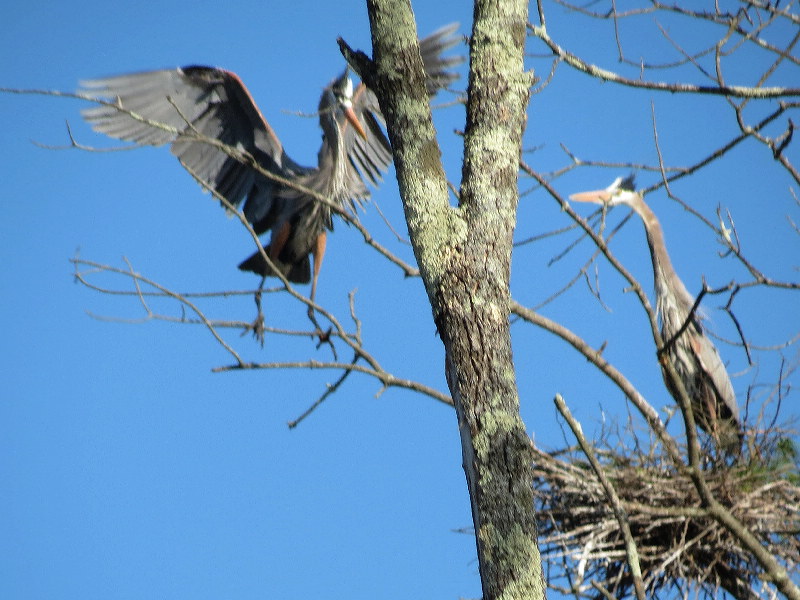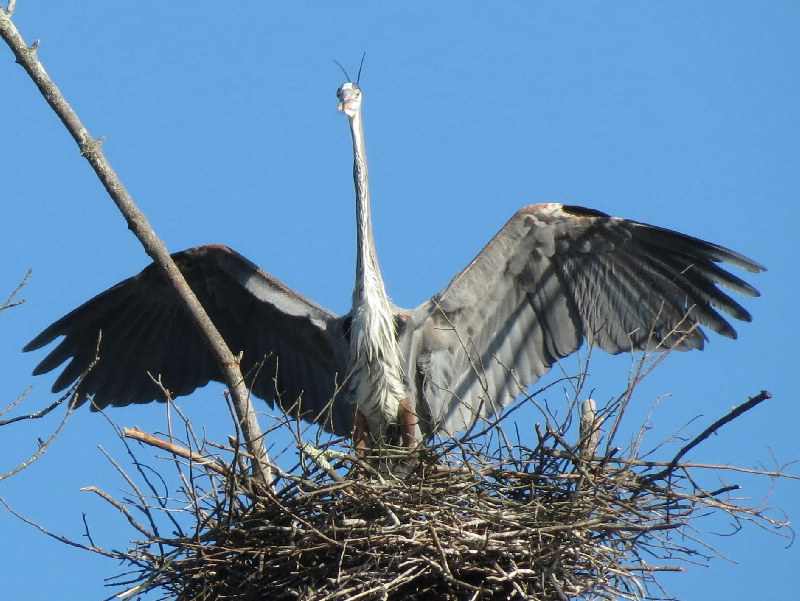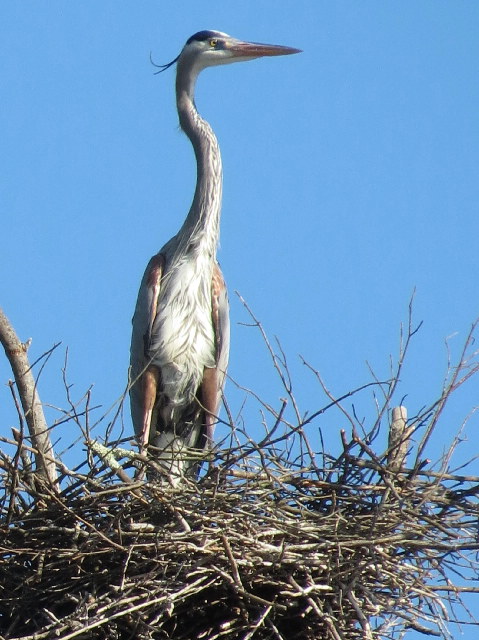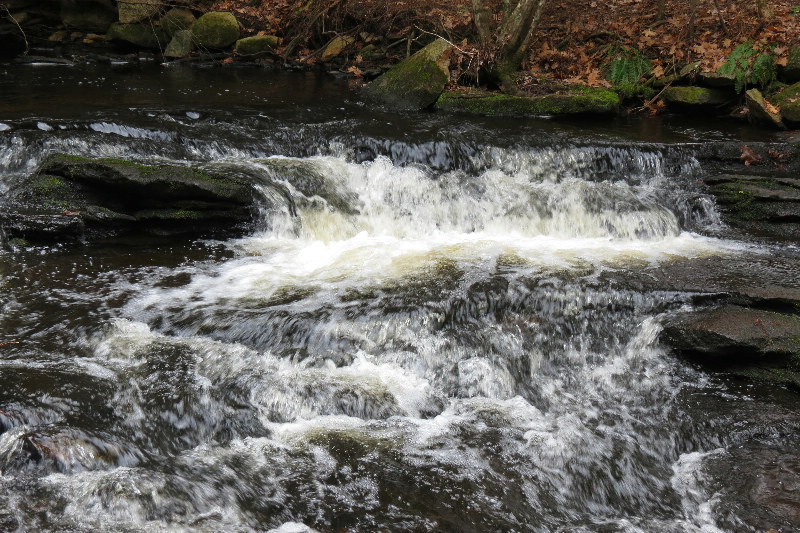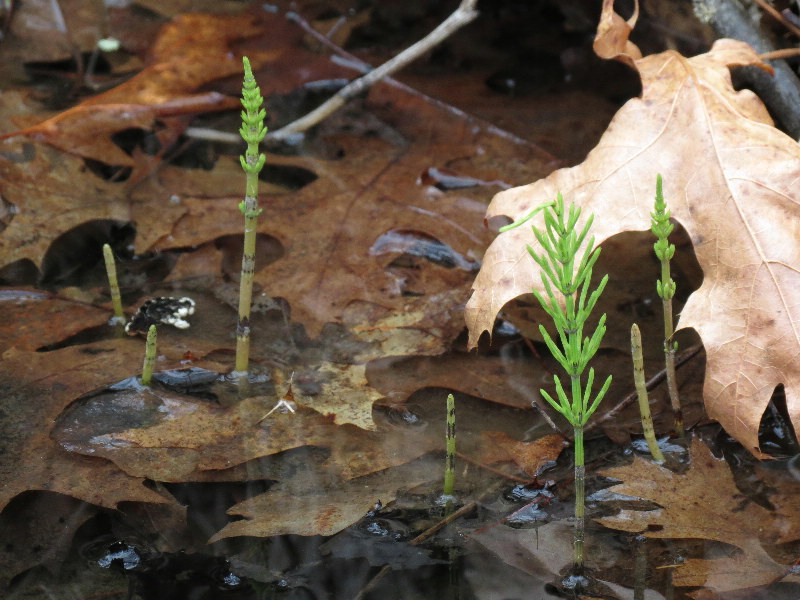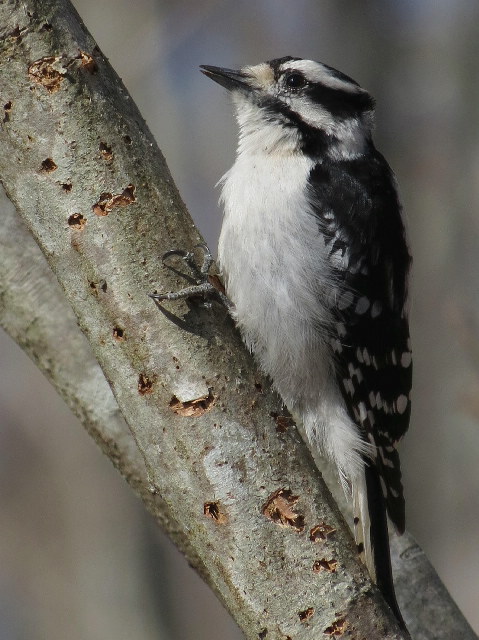Along the Air Line... 2012 - Spring, Part 2 The Air Line Trail in Eastern Connecticut - Stan Malcolm Photos |
mHome Page Stan's FlickR Albums |
March 26th. A brief break in the clouds let warm dawn sunlight bathe the marsh. |
|
|
First glance at the old beaver lodge showed nothing out of the ordinary... |
...a closer inspection revealed a pair of Mallards (Anas platyrhynchos). |
Closer still. |
|
|
Red-winged Blackbirds (Agelaius phoeniceus) calling in the warm light. |
|
|
Sunshine improves everything. |
A pair of Wood Ducks (Aix sponsa) tolerated me briefly. |
Three more Wood Ducks were checking out the dead tree in this photo (just downstream from the beaver dam), but flew before I could get a clear photo. |
I think they were interested in this tree hole - but I'd be surprised if they'd nest in it with it so close to the trail. (Hope I'm wrong.) |
Another Mallard. |
A mid-morning walk on the Lebanon section of the trail. The boulder makes a former wire fence. Beyond it is a muddy patch and then... |
...a Great Blue Heron (Ardea herodius) roost. |
Roughly a dozen nests in various states of construction. Birds in flight and standing on the nests. |
I think it's too early yet for eggs, much less young. |
|
|
Finally, a picture of a Mourning Cloak (Nymphalis antiopa), which I've been seeing for a few days - but they're wary. |
March 27th. Four male mallards in the marsh east of Route 207. |
Looks like a Muskrat lodge in that marsh too. |
MUch better light during an afternoon visit to the Great Blue Heron roost in Lebanon. |
|
|
|
|
|
|
|
|
|
Antennae? |
|
|
|
April 1st. The bridge over Judd Brook with Spicebush (Lindera benzoin) blooming in the foreground. |
The falls just upstream from the bridge. |
Listen! |
The falls in Slow Motion. (Just to try it. No audio with slow motion.) |
Field Horsetail (Equisetum arvense). |
The green vegetative stalks will expand and branch, resembling miniature conifers. The reproductive stalks are brownish and unbranched. (One just to the right of center.) |
April 4th. Common Blue Violet (Viola sororia) in sandy soil on the banks of the Blackledge River near where it passes under the Air Line Trail. |
These are also Common Blue Violets; they're very variable - and the same violet common in lawns. |
April 6th. A female Downy Woodpecker (Picoides pubescens) at work Note all the peck holes through the bark. In this shot you can see the two features which distinguish the Downy from the similar but slightly larger Hairy: short beak and dark spots on the white lateral tail feathers. |
|
|
They close their eyes when thney hammer. Note those claws too. |
Multiflora Rose poking through an expanding Skunk Cabbage leaf. |



